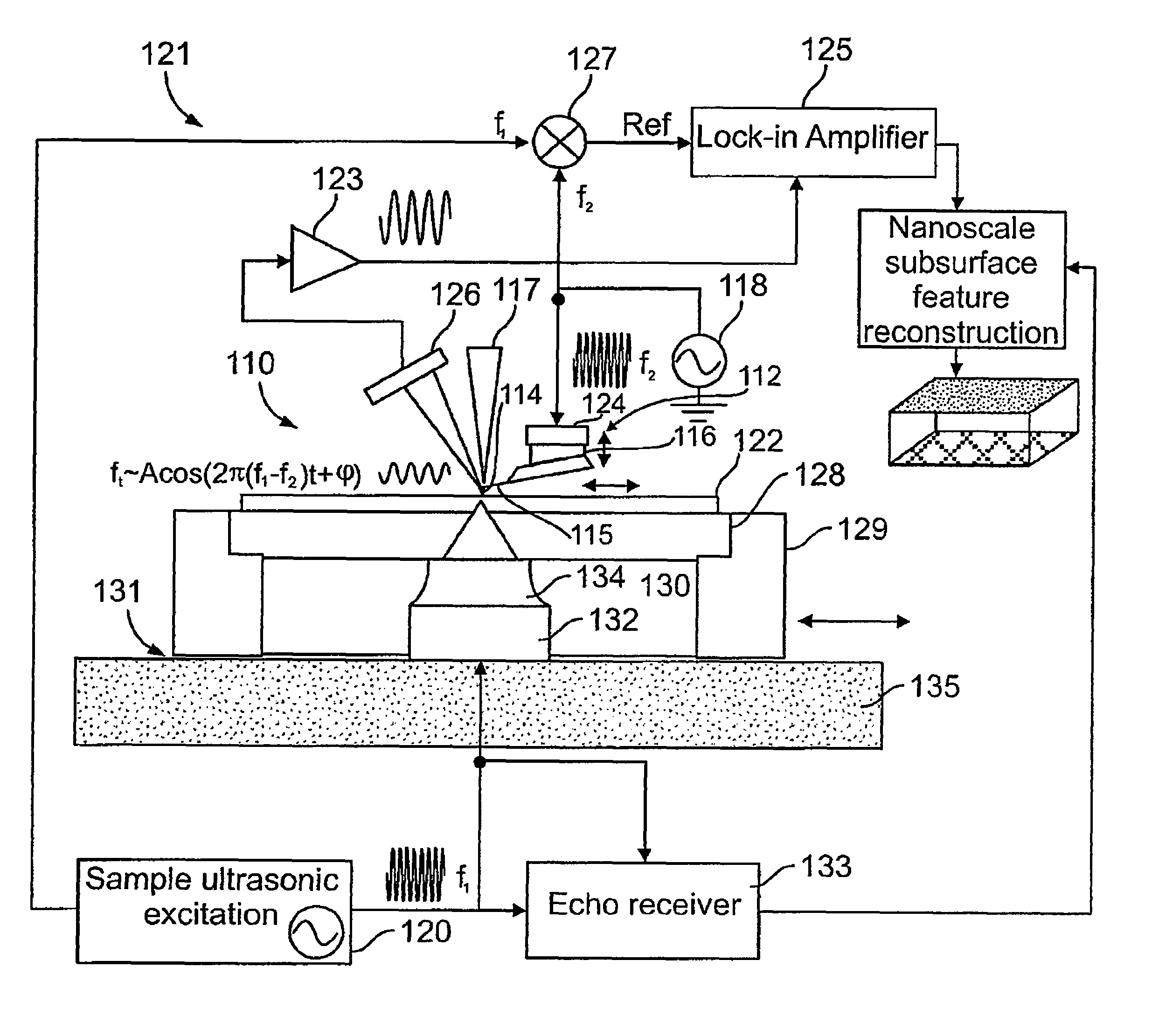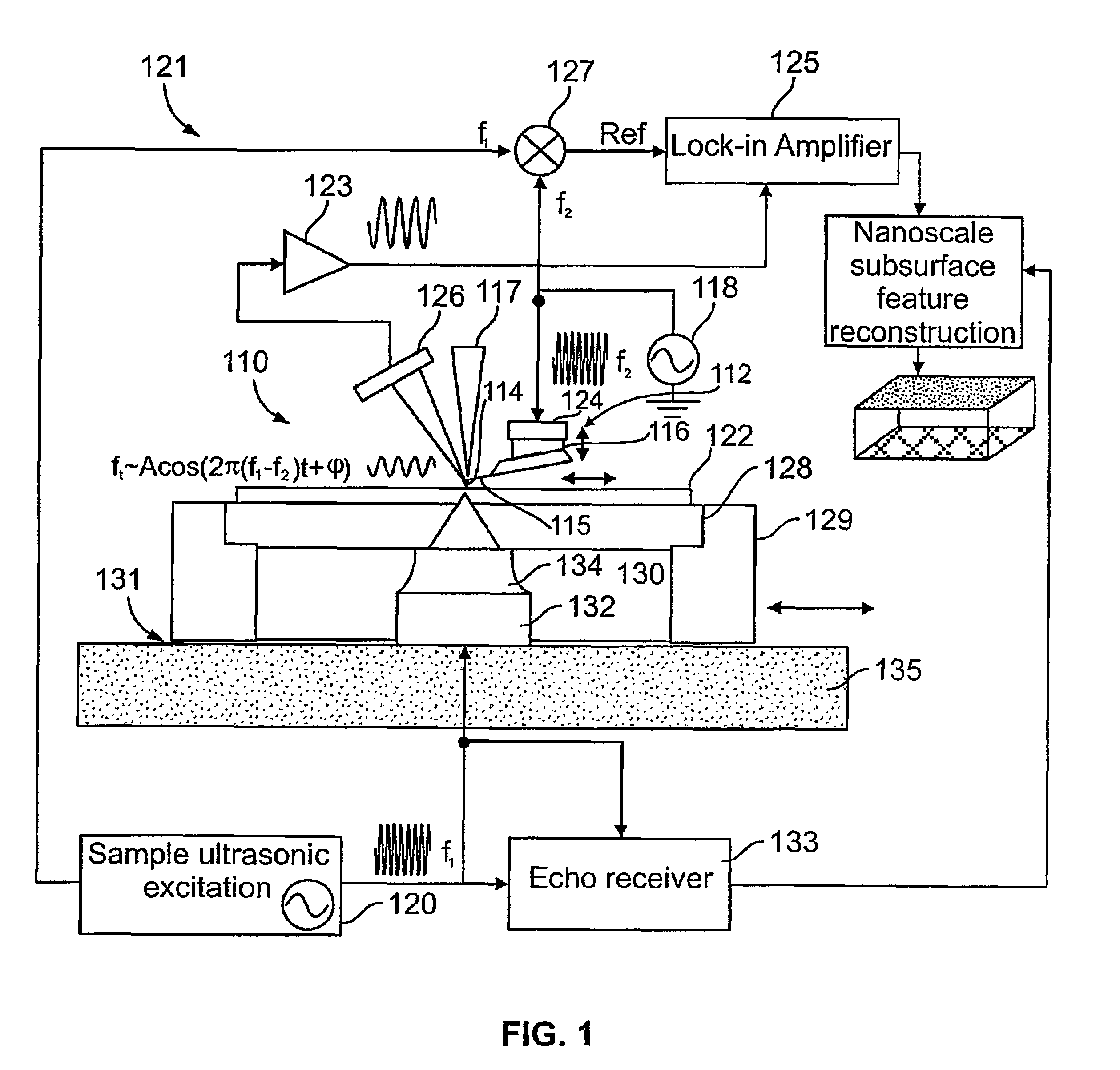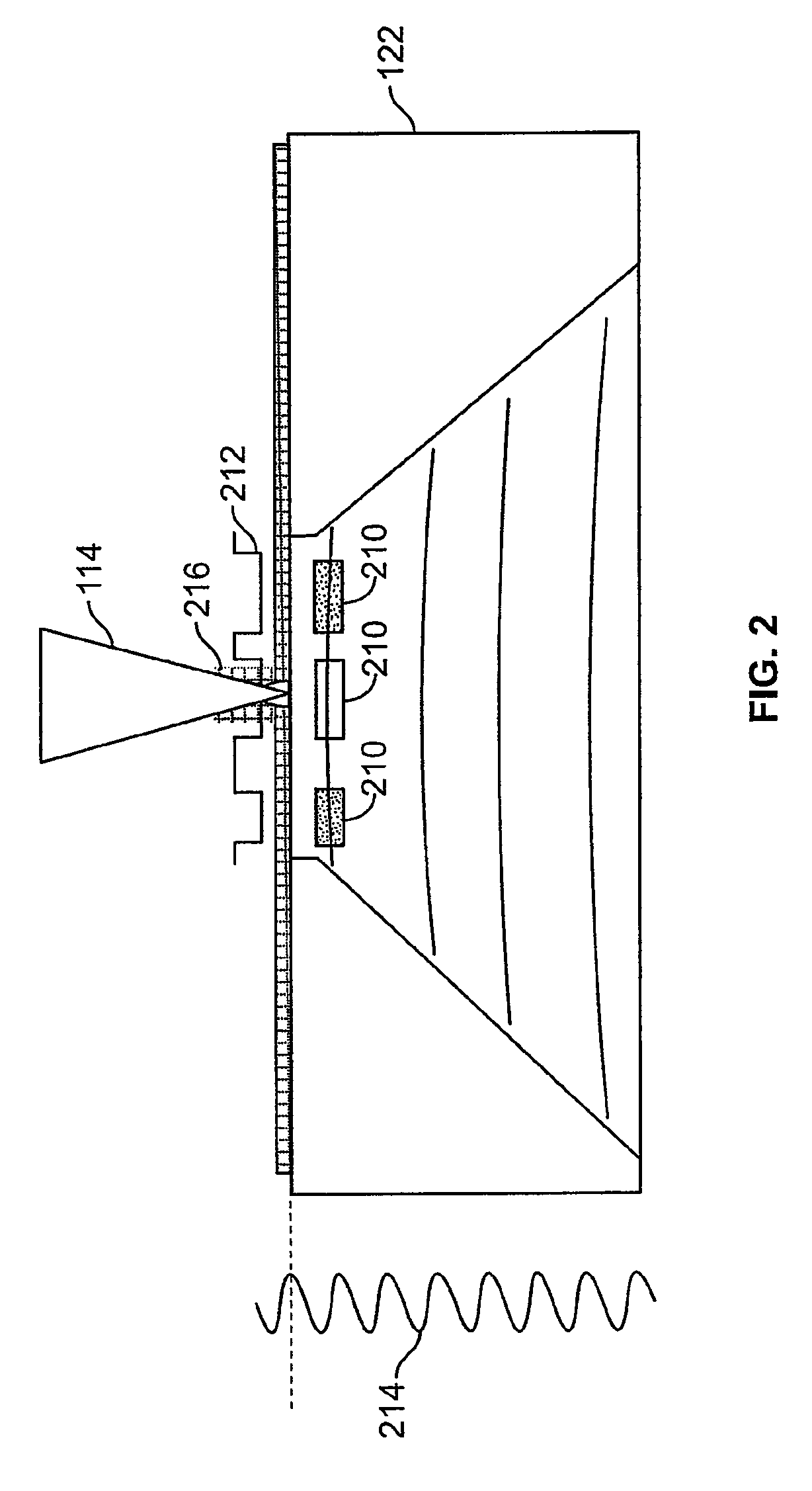Non-destructive wafer-scale sub-surface ultrasonic microscopy employing near field AFM detection
a subsurface ultrasonic microscopy and wafer-scale technology, applied in the direction of instruments, mechanical roughness/irregularity measurements, specific gravity measurements, etc., can solve the problems of preventing the broad application of systems and methods, affecting the and no existing technique provides routine broad-adopted nanoscale sub-surface metrology routinely, etc., to achieve the effect of better resolution of the reconstruction step
- Summary
- Abstract
- Description
- Claims
- Application Information
AI Technical Summary
Benefits of technology
Problems solved by technology
Method used
Image
Examples
Embodiment Construction
[0027]In a preferred embodiment of the invention, a scanning probe microscope (SPM) is used to obtain information about a sample through harmonic resonance imaging (HRI). The SPM may comprise any instrument that utilizes a tip-bearing probe to obtain information concerning a sample and that is capable of oscillating the tip. It may, for instance, comprise a scanning tunneling microscope (STM), a scanning magnetic force microscope (MFM), a scanning capacitance microscope (SCM), a scanning near-field optical microscope (NSOM), a scanning thermal microscope (SThM), or an atomic force microscope (AFM). An embodiment of the invention in the form of an AFM will now be disclosed, it being understood that the invention applies to all other SPMs as well.
[0028]Referring now to FIG. 1, a schematic diagram of a nanoscale sub-surface metrology (NSM) instrument 100 is shown, according to an exemplary embodiment. A scanning probe microscope, such as an atomic force microscope (AFM) operates by pro...
PUM
| Property | Measurement | Unit |
|---|---|---|
| diameter | aaaaa | aaaaa |
| frequency | aaaaa | aaaaa |
| thickness | aaaaa | aaaaa |
Abstract
Description
Claims
Application Information
 Login to View More
Login to View More - R&D
- Intellectual Property
- Life Sciences
- Materials
- Tech Scout
- Unparalleled Data Quality
- Higher Quality Content
- 60% Fewer Hallucinations
Browse by: Latest US Patents, China's latest patents, Technical Efficacy Thesaurus, Application Domain, Technology Topic, Popular Technical Reports.
© 2025 PatSnap. All rights reserved.Legal|Privacy policy|Modern Slavery Act Transparency Statement|Sitemap|About US| Contact US: help@patsnap.com



